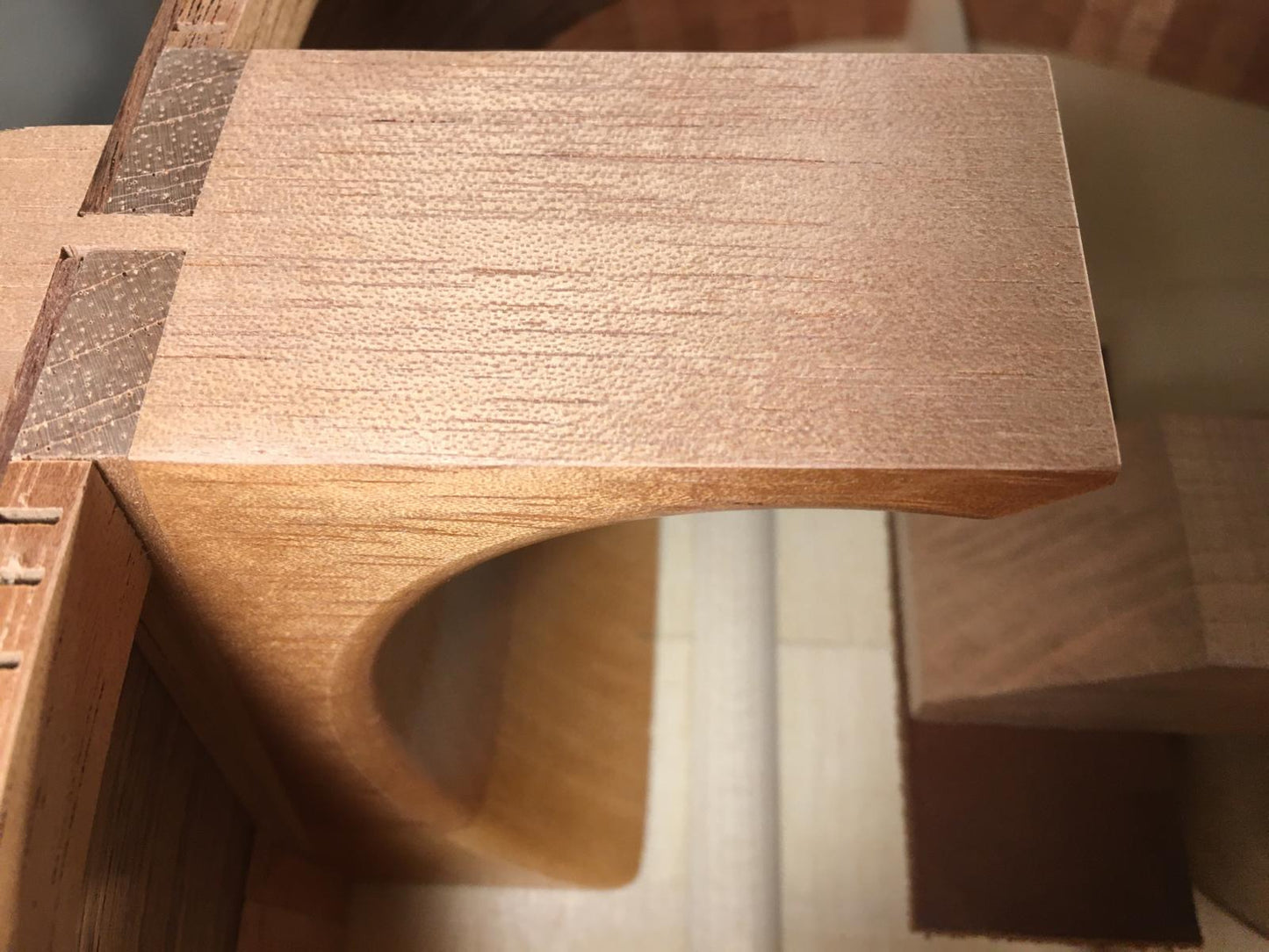Oreste Lohs - 2025 Nr. 22
Oreste Lohs - 2025 Nr. 22
Details
Details
Overview
Overview
Shipping important note
Shipping important note
Delivery times are typically reliable and most instruments arrive within the estimated timeframe.
Should any unexpected delay occur, our team will keep you informed and provide support at every step. For all shipping details and exceptions, please see our Shipping Policy.
Details about GPSR
Details about GPSR




























Video overview


More details about the guitar
About the luthier
Oreste Lohs is a young guitar maker from northern Italy, based in Arco near Lake Garda. After studying with Daniele Chiesa, he developed a personal building philosophy rooted in tradition, craftsmanship and a sensitive understanding of sound. He produces only a small number of guitars each year and gives each instrument his complete attention. Oreste works extensively with hand tools and uses hot hide glue throughout the entire construction, since he values direct contact with the wood and the clarity that traditional methods bring to his decisions.
While the influence of Daniele Chiesa and the Granadan school is present in his work, Oreste’s guitars already show a distinct personal identity. His approach brings together disciplined technique, respect for tradition and a calm artistic intuition. The result is a body of work in which a traditional sound ideal is shaped with individuality and intention, and each instrument is conceived as a complete and coherent musical tool.
About the guitar
This guitar, numbered 22nd, is built with a red spruce soundboard from Trentino Alto Adige felled in 2006 and Madagascar rosewood for the back and sides seasoned since 2001. All parts of the instrument are assembled with hot hide glue. The soundboard carries seven fan braces, two closing bars and a harmonic bar beneath the fretboard in the upper bout region. The rosette is inspired by Romanillos and executed with precision and clarity. The plantilla remains consistent with Oreste’s overall style, and the headstock is influenced by Torres, slightly narrower than the original outline and shaped with quiet elegance. The guitar is finished entirely in French polish and fitted with Alessi tuners.
The sound of this instrument is sweet and lyrical, with expressive nuance appearing even at a gentle attack. Notes respond quickly and connect with ease across all registers, so that phrases flow naturally under the hands. The guitar projects with assurance without needing to be driven hard, and colour changes arise readily with subtle right hand movement, offering a wide palette without effort. Playability is one of its strong points. The instrument settles comfortably in the hands and supports relaxed, fluid phrasing from the first touch. Visually and sonically, this guitar presents refinement, coherence and a personal artistic voice. It is an inviting choice for players who seek a traditionally voiced concert instrument shaped with care, sensitivity and clear intention.
Regular care extends the life of the instrument
Even with careful use, a classical guitar may gradually change in appearance or respond to unstable storage conditions. Have a close look at your guitar regularly and be attentif to changes. If your instrument is suffering from its environement, it will let you know.
Protect Your Guitar: Handle with Care
Be mindful when touching your instrument with greasy or unwashed hands: any skin contact is a small attack on the varnish. Of course, a guitar is made to be played, but taking a few precautions helps preserve its beauty: wash your hands before playing, wear long sleeves, and avoid unnecessary direct skin contact with the body of the instrument.
Pro tip: Avoid playing with a button-up shirt, heavy jewelry, or a belt, as these can scratch the guitar. Also, make sure your guitar case is free of any objects that could damage the instrument during storage.
String care
A good habit to adopt is wiping down your strings briefly after each playing session. This small action significantly extends their lifespan and helps maintain a consistent, comfortable feel under your fingers.
Most importantly, clean strings are essential for keeping your instrument in tune. Corrosion, sweat, and dust can affect the uniformity of the strings and interfere with accurate tuning across the entire fingerboard.
Pro tip: If you're having trouble getting your guitar in tune, it might be time to change the strings. A useful test is to compare the pitch of the 12th fret harmonic with the fretted note at the 12th fret; if there's an unusually large gap between them, your strings may have lost their integrity and should be replaced.
Keep Your Shellac Finish Shining!
Got a guitar with a shellac (French polish) finish? Here's a simple trick: Take a clean microfiber cloth and gently breathe on the surface to create a light mist. Then, softly rub to remove fingerprints, sweat, and grease. That’s usually all it takes to keep it looking great, no products needed!
Pro tip: Every few years, treat your guitar to a check-up with a luthier to keep it in top shape.
Storing Your Guitar: Climate Matters
Your guitar can safely stay outside its case, as long as the surrounding environment maintains 42–55% humidity and a temperature between 18–25°C.
Keep in mind that humidity levels can still fluctuate inside the case, especially during seasonal changes.
- Too much humidity may cause overtightened strings and a dull tone.
- Too little humidity can lead to a bulging top, string buzz, or even cracks.
Avoid placing your guitar near radiators, air conditioners, or windows with direct sunlight.
Pro tip: Always close your guitar case while playing. This helps preserve a stable microclimate inside the case, so your instrument is protected the moment you put it back in.



























































